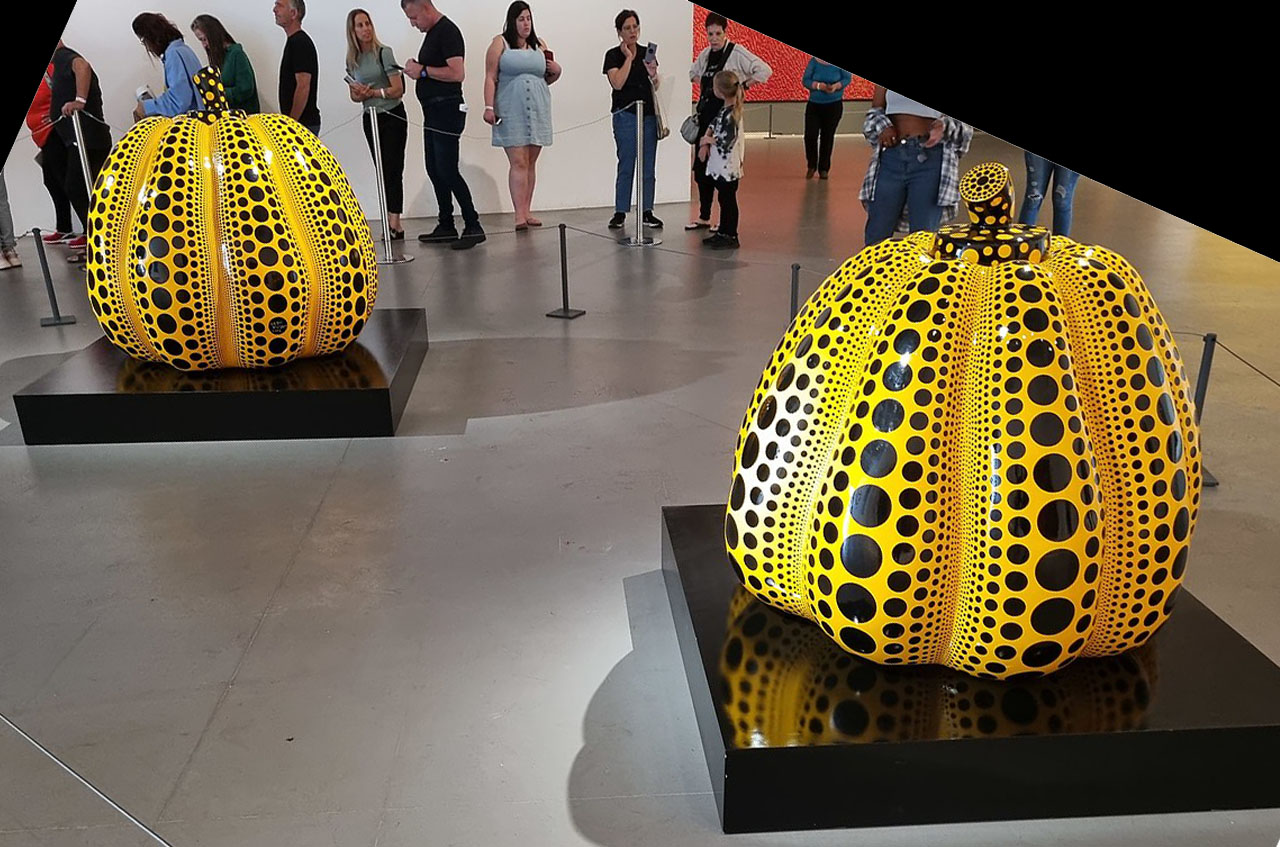
Why Are Art Collectors Drawn to Kusama’s Pumpkin Sculptures
In the lush intersection of pop art, surrealism, and contemporary minimalism lies the world of Yayoi Kusama, a visionary Japanese artist whose kaleidoscopic imagination has captivated the global art scene for decades. Among her many celebrated motifs, polka dots, infinity rooms, mirrors, it is the humble pumpkin that stands out as her most beloved and enduring symbol. More than a recurring element in her art, Kusama’s pumpkin sculptures have grown into cultural icons, valued not only for their whimsical appearance but also for their profound emotional and psychological significance.
This article explores the origin and evolution of Yayoi Kusama’s pumpkin sculptures, delving into their personal meaning for the artist, their symbolism in art history, and their immense appeal among collectors and audiences alike. We’ll also discover where her most famous pumpkins reside today, from serene Japanese islands to prestigious Western galleries.
Where is the Pumpkin Sculpture by Yayoi Kusama?
Yayoi Kusama’s pumpkin sculptures have become globally recognized and are now housed in prominent museums, galleries, private collections, and public installations around the world. However, perhaps the most iconic of them all is found on the Naoshima Island in Japan.
Naoshima, located in Japan’s Seto Inland Sea, is known as an “art island,” with multiple museums and outdoor art installations. Kusama’s giant yellow pumpkin sculpture sits on the edge of a pier on the southern coast of the island. Dotted with her signature black polka dots, the sculpture faces the sea, creating a striking contrast between the organic and the surreal. It is both a whimsical statement and a meditative figure, perfectly embedded in the natural and cultural landscape.
In addition to Naoshima, other major locations that house Kusama’s pumpkin sculptures include:
The Hirshhorn Museum and Sculpture Garden in Washington D.C.
The Museum of Modern Art (MoMA) in New York
The Tate Modern in London
The Louisiana Museum of Modern Art in Denmark
The Matsumoto City Museum of Art in Kusama’s hometown in Japan
Temporary installations of Kusama’s pumpkins have appeared in cities around the world, from Paris and Hong Kong to Sydney and Seoul, often drawing massive crowds. In 2021, a red-dotted pumpkin sculpture was famously installed at the New York Botanical Garden as part of a larger Kusama retrospective titled KUSAMA: Cosmic Nature.
What Do the Pumpkins Mean to Yayoi Kusama?
For Yayoi Kusama, pumpkins are far more than decorative gourds, they are deeply personal symbols rooted in memory, comfort, and artistic expression. Born in 1929 in Matsumoto, Japan, Kusama experienced a troubled childhood marked by familial conflict, war, and psychological distress. She began experiencing vivid hallucinations from a young age, many of which involved patterns, fields of dots, and organic forms like flowers and pumpkins.
In interviews and autobiographical writings, Kusama has repeatedly emphasized the emotional resonance that pumpkins hold for her. She recalls encountering a pumpkin as a child and being captivated by its “charming” and “generous” form. Unlike the threatening hallucinations that haunted her, the pumpkin appeared gentle, humorous, and nourishing, a presence of security and peace.
She once said:
“I love pumpkins. As my spiritual home since childhood, and with their infinite spiritual balance, they embody a form of spiritual serenity. And they speak to me of the joy of living.”
The pumpkin, in Kusama’s universe, is an anchor, both real and fantastical. It represents a reconciliation between her inner world of chaos and the outer world of form and beauty. Through art, she transforms the pumpkin into a bridge between trauma and healing, fear and comfort, instability and serenity.
The Artistic Evolution of the Pumpkin
Kusama’s first known pumpkin work dates back to the late 1940s, but it wasn’t until the 1980s and 1990s that her pumpkin sculptures gained serious attention. Her 1994 installation of the Yellow Pumpkin on Naoshima Island solidified the pumpkin as a key motif in her mature period.
Rendered in fiberglass-reinforced plastic and painted in high-gloss yellow and black, the sculpture is both playful and monumental. It merges her love for repetitive patterns (particularly polka dots) with the organic form of the pumpkin. The repetition, scale, and bright coloration draw attention, but the deeper effect is meditative, offering the viewer a chance to immerse themselves in a rhythmic visual field.
Over time, Kusama has explored the pumpkin in various media:
2D works: Acrylic paintings, woodblock prints, drawings
Sculptures: Fiberglass, resin, bronze, and sometimes light-up LED versions
Installations: Entire rooms filled with mirrored pumpkins or suspended ones that reflect endlessly in mirrored infinity rooms
Kusama’s pumpkins have even become fashionable icons. Miniature versions appear in designer collaborations, while Louis Vuitton famously worked with Kusama to bring her pumpkin dots and patterns to luxury bags and clothing.
Why Are Art Collectors Drawn to Kusama’s Pumpkin Sculptures?
There are multiple layers of appeal when it comes to Kusama’s pumpkin sculptures. For collectors, they embody a unique convergence of visual appeal, conceptual depth, market value, and cultural cachet.
1. Visual and Emotional Resonance
Kusama’s pumpkins are instantly recognizable. Their combination of color, form, and pattern creates a visual rhythm that is both striking and soothing. Their whimsical shapes and repetitive dot motifs resonate emotionally with viewers, evoking feelings of joy, curiosity, and nostalgia.
2. Symbolic Significance
Because pumpkins represent a sense of inner peace for Kusama, they function as a kind of visual therapy, not just for the artist, but for the audience as well. In an increasingly anxious world, these pumpkins can be interpreted as meditative objects offering calm and emotional refuge.
3. Cultural and Artistic Prestige
Owning a Kusama work, especially a pumpkin, is akin to owning a piece of art history. Kusama has been hailed as one of the most important contemporary artists of our time. Her pumpkin sculptures are part of a legacy that bridges Japanese avant-garde, Western minimalism, and pop art. They carry the cultural capital that collectors seek, especially in a global market.
4. Market Value
Kusama’s pumpkins are not just artistically valuable, they’re financially lucrative. Works like her Pumpkin (2010) have sold for millions at auction. As demand continues to rise, especially in Asia, her works have proven to be reliable investments, often appreciating in value. Limited edition pumpkins, even those in smaller formats, can fetch high prices in the secondary art market.
What Do Pumpkins Symbolize in Art?
Beyond Kusama’s own psychological and emotional interpretation, pumpkins carry rich symbolism across cultures and artistic traditions.
1. Harvest and Fertility
Traditionally, pumpkins are associated with the harvest season and abundance. In agrarian cultures, they symbolize nourishment, prosperity, and the cyclical nature of life.
2. Transformation
Thanks to fairy tales like Cinderella, pumpkins often symbolize magical transformation. This connects subtly to Kusama’s use of pumpkins as vessels of psychological change, transforming pain into art, hallucination into form.
3. Mortality and Time
In some art, particularly still lifes (vanitas paintings), pumpkins can symbolize the passage of time, the ripening and eventual decay of life. This adds another layer of contemplation to Kusama’s works, especially those placed in outdoor settings where they weather and age.
4. Playfulness and Whimsy
Due to their roundness and color, pumpkins often convey humor and innocence. Kusama leverages this lightness to contrast with deeper undercurrents of mental illness and existential searching, creating a poignant tension that enriches her work.
Yayoi Kusama’s pumpkins transcend mere decoration, they are icons of resilience, imagination, and healing. Whether towering on a Japanese island, glowing in a mirrored room, or quietly perched on a collector’s pedestal, these sculptures reflect the soul of an artist who turned her psychological struggles into some of the most celebrated art of our time.
They invite us not just to look, but to contemplate, to enter a dotted universe where boundaries dissolve, and a single gourd can carry a universe of meaning.
Through the lens of the pumpkin, we see Kusama not as a singular eccentric, but as a profound visionary. And through her pumpkins, she has given the world a gift that is at once playful and powerful, intimate and immense, fleeting and timeless.
Kusama’s pumpkins are more than polka-dotted sculptures; they are icons of contemporary art, rich in symbolism and personal meaning. They illustrate how something as simple and natural as a gourd can be elevated into a profound artistic motif through vision, persistence, and emotional honesty.
Art collectors gravitate to Kusama’s pumpkins because they straddle the line between accessibility and depth, beauty and narrative, fun and philosophical reflection. And viewers, regardless of their background, can find something familiar yet mysterious in the rotund, dot-covered forms.
In a world that often feels fragmented, Kusama’s pumpkins are whole. They invite us into a soft world of color and form, asking us to pause, to breathe, and to imagine anew. And in doing so, they remind us of the enduring power of art to transform not just the spaces we inhabit, but the selves we carry within.




